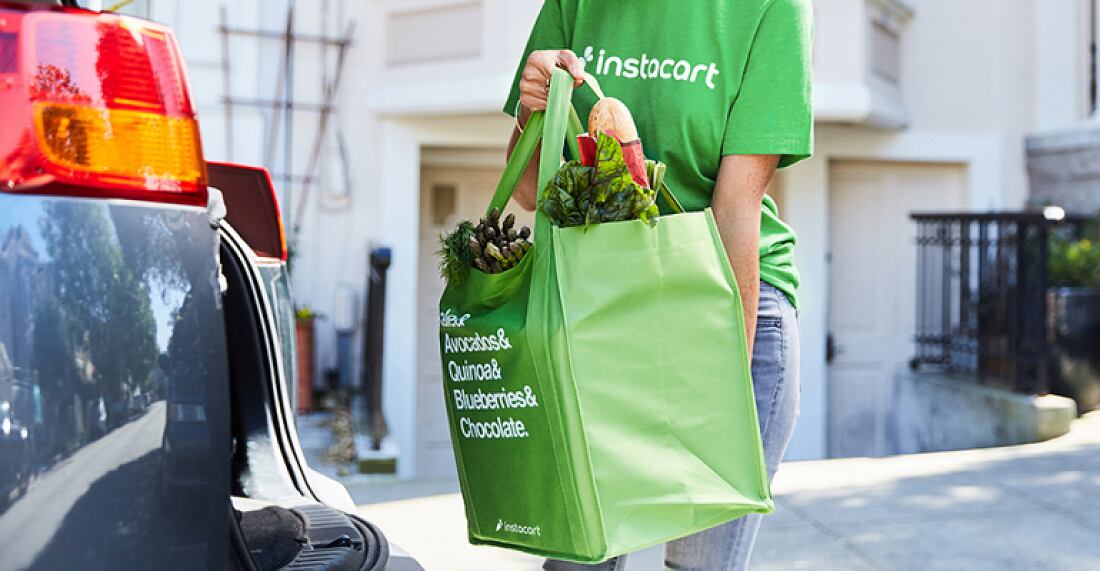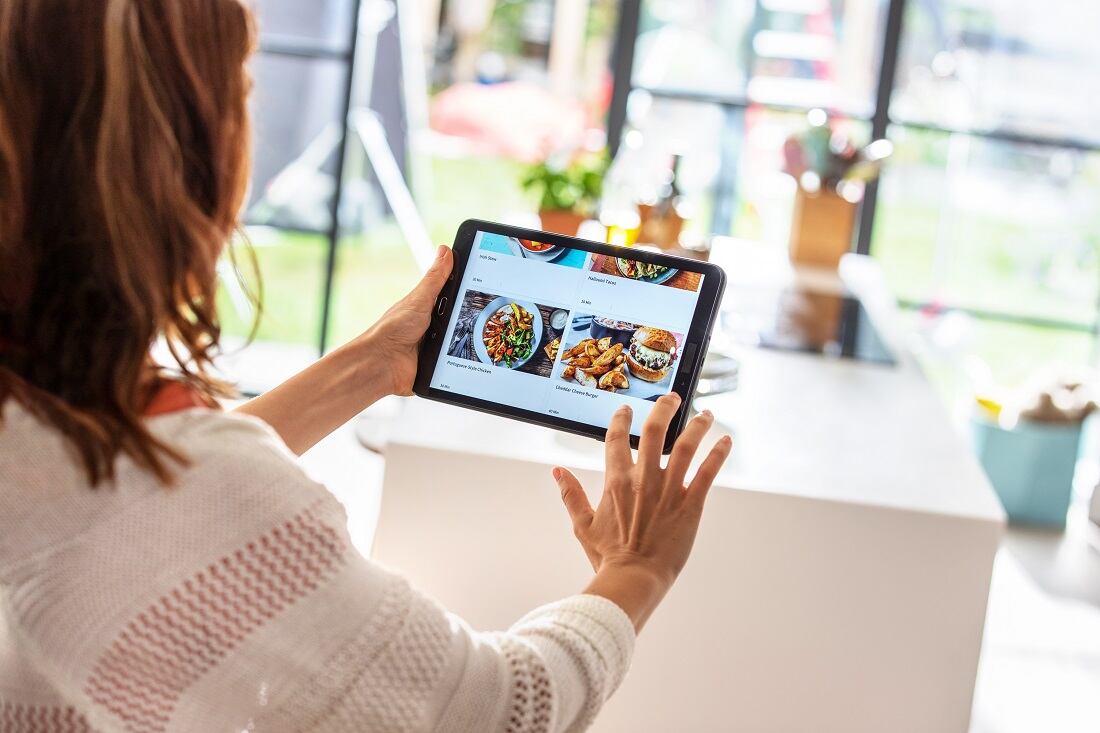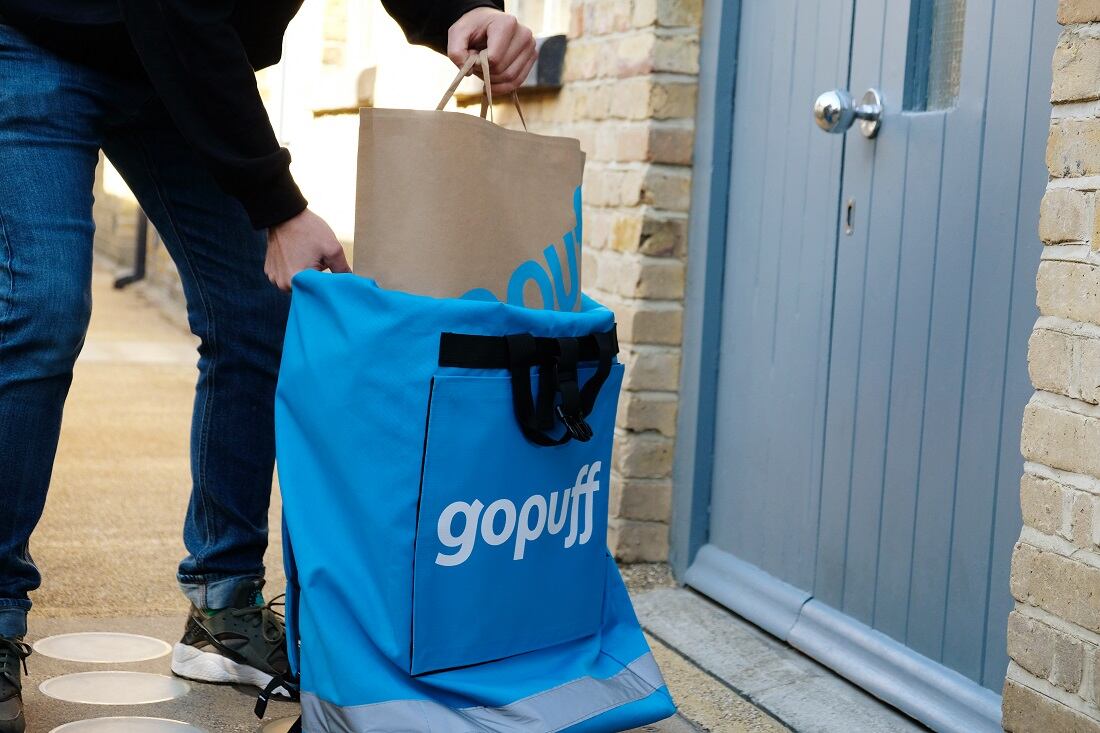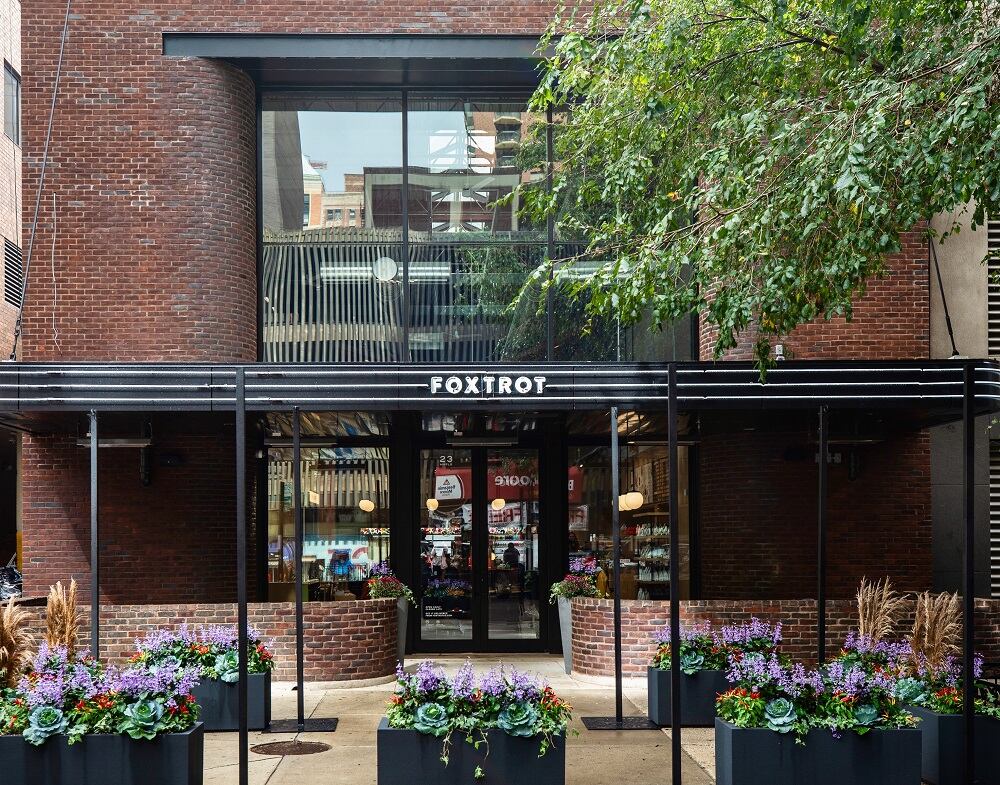While there was some question whether consumers would ditch their newly-adopted e-commerce habits for in-store shopping as the threat of coronavirus decreased, a report from 1010data found that shopping for groceries online is here to stay evidenced by Instacart's continued growth and performance.
"Grocery delivery has shifted from a nice perk that was associated with high fees to a convenience that is worth the cost of use. This shift in behavior is seen clearly in the growth of Instacart’s share of e-commerce," noted 1010data.
Instacart, a third party grocery delivery app, has captured a 3% share of the total grocery e-commerce universe (up from 1% in 2019) and when limiting the scope to just the merchants Instacart services (e.g. Costco, Aldo, Kroger), it holds a 21.5% market share in terms of goods sold online through these retailers, according to 1010data.
Over the past two years, Instacart has experienced nearly 400% sales growth and tripled its share of the market during the same time period.
Overall units sold by Instacart has been on a steady incline since 2019, reaching 12.36% of units sold in 2021, up from 5.27% in 2019 indicating that the company's customer base is expanding, according to 1010data.
"Overall, Instacart and grocery delivery continue to grow and flourish even as the pandemic lock downs end and shoppers have the ability to return to the stores."
Trend towards delivery
While retailers have a variety of options for consumers to collect their online grocery orders (pickup, curbside, locker, scheduled, same-day, and instant delivery), the top choice continues to be delivery.
According to 1010, e-commerce orders fulfilled by delivery grew 77% from 2019 to 2021. Of that, Instacart accounted for 17% share of the growth from 2020 to 2021.
"Despite new entrants in this space and retailers expanding their own store
provided delivery, Instacart continues to be a market leader... This is extremely high for a merchant with 3% share of total eCommerce as of full-year 2021," noted 1010data.
Retailer breakdown
In terms of the retailers driving the most purchases through Instacart, which works with over 500 retailers, Publix, Costco, Aldi, Kroger, and Wegmans came out on top accounting for 50% of Instacart sales.
The largest gains in share over the past two years were seen at Publix, Costco, Aldi, Food Lion, Shoprite, Meijer, and Walmart, according to 1010data.
Top categories: Protein, health bars, and beverages
But are online customers shopping across categories equally? According to 1010data, 82% of Instacart dollar sales come from grocery items with a majority of growth coming from center-store items.
"Shelf-stable beverages and foods are driving increased sales while sales for perishable items and household items are declining. The outlier to these findings is meat," noted 1010data.
According to the data, the categories that saw the most growth between 2020 and 2021 included protein (+80%), health bars (+56%), carbonated soft drinks (+37%), tea (+31%), juice (+285), and confectionery (+19%) in dollar sales in 2021.
"In comparison we have seen growth slow in the fresh areas, so dairy only had a growth of 5% in 2021 compared to 305% in 2020," the report pointed out.
Basket size and value
The shift away from perishables items, which in general tend to be more expensive, to products with a longer shelf life, has led to a drop in value of basket sizes, 1010data found.
The average grocery basket size dropped -14% from 2019 to 2021 (not quite as steep of a drop compared to other areas of the store such as health & beauty and household essentials, which saw a -20.9% and -17.2% decrease in average value, respectively).




